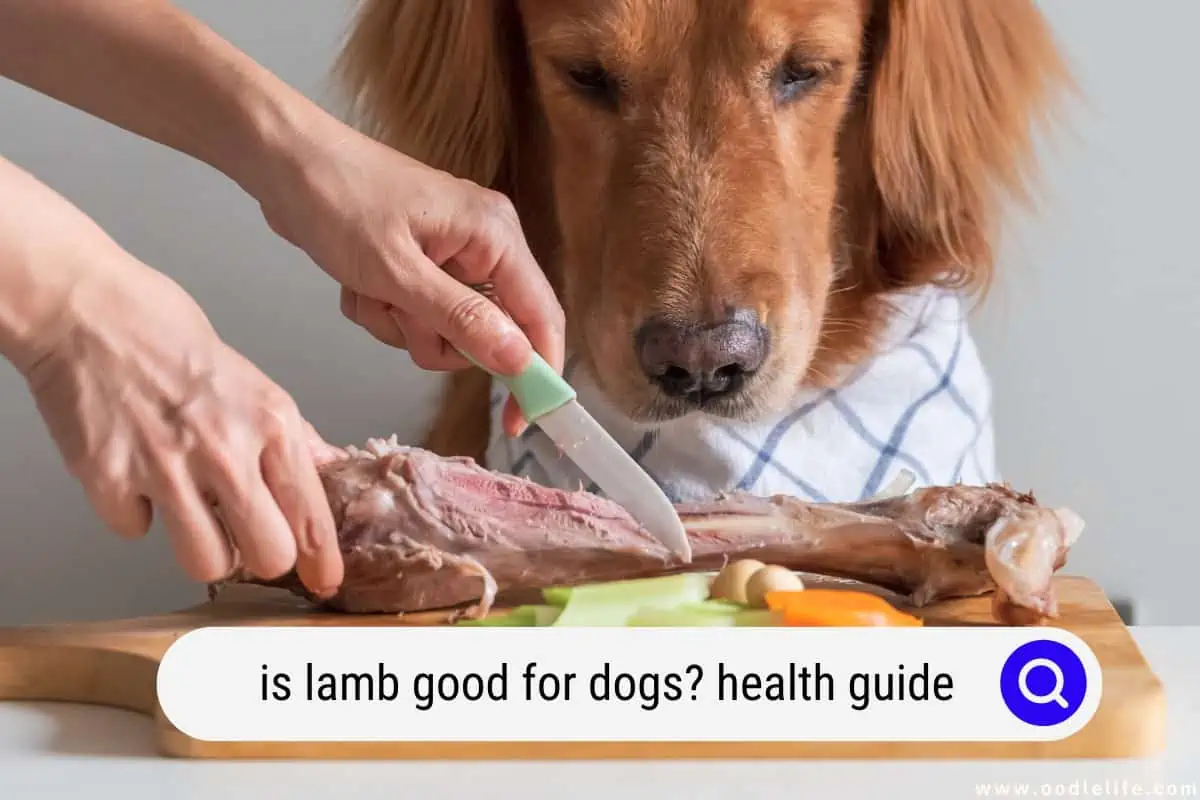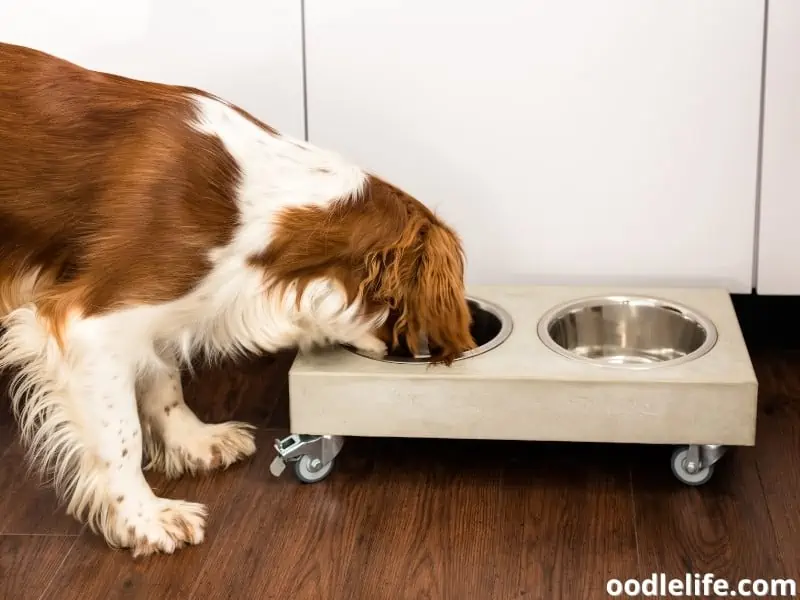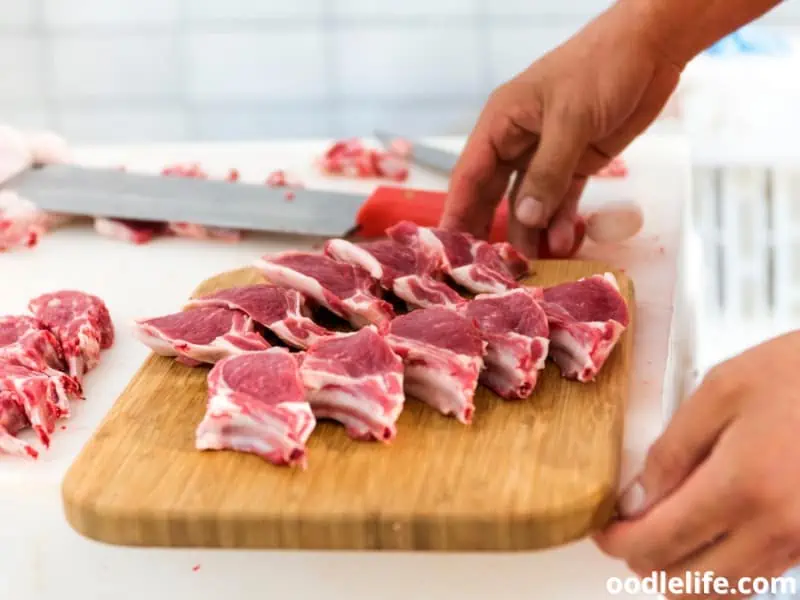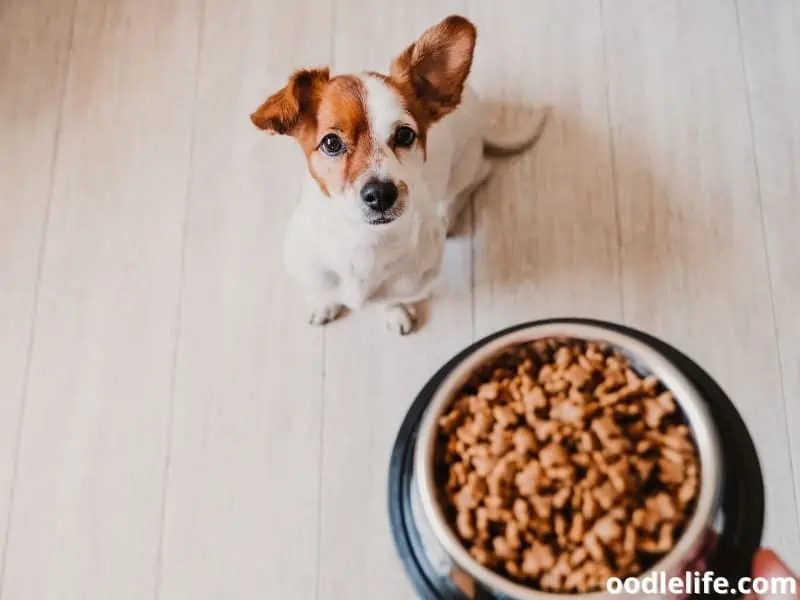Is Lamb Good for Dogs? Health Guide
It is estimated that the average American spends a whopping $1,480 every year on feeding their dog. Of course, this is dependent on the size and activity level of your dog, but nevertheless, this is a clear sign that our furry friends have won our hearts. Spare no expense and all that!
If you, like us, want the best for our canine buddies, you’ll be aware that “you are what you eat” rings true to those with four legs as well.

Any responsible dog owner knows that nutrition is a big part of maintaining your dog’s health and well-being.
There are many food options for dogs currently on the market and the source of protein is a matter of big debate. Should you go with chicken, beef, or lamb? Or the unconventional have chosen to feed their pooches plant-based protein, or even protein obtained with insect protein!
In this blog post, we’ll look at all things lamb, and see why it is the best source of animal protein, as well as one of the best sources of overall protein for your beloved pooch.
Health Benefits of Lamb For Dogs
While chicken and beef have their merits, lamb has been frequently been known to trump them all.
1. High in Protein
Dogs are omnivorous animals so, like us, they can eat both meat and vegetables. However, since they require lots of protein, they favor meats over vegetables.

You will notice that dogs behave like children when they are served meat and vegetables, they will finish the meat quickly and struggle to eat their vegetables. Urgh. Eat your greens already!
Scientifically, lamb has one of the highest amounts of biologically available protein for your dog. Protein is important in building muscle and the general health of your dog so a rich source is extremely beneficial.
This is especially true for larger-sized dogs like the Great Dane who as a result of their size, require more protein to meet their nutrition needs. Not just any protein source will do, and not all proteins are created equal.
Some foods are rich in protein but your dog may be unable to completely digest them and will not benefit much from consuming them. Lamb protein is quite the opposite. Your dog is able to digest and absorb maximum protein from it making lamb one of the most nutritious sources around.
2. Good for Allergies
Food allergies affect a surprising number of dogs, and the culprits behind the reactions are often dairy, chicken, beef, eggs, and wheat.

Lamb is missing from this top allergen list making it a great option for dogs that have food allergies. Lamb is often recommended by veterinarians for dogs with sensitive tummies or allergies as chicken and beef can cause a reaction.
In addition, if your dog has sensitive skin, you can try lamb-based dog food to see if your dog will react. Oftentimes, dogs that struggle with skin conditions benefit greatly from lamb-based protein.
3. Yummy Taste
While humans can find the taste of lamb or mutton a tad overpowering, that’s what dogs love! After all, they roll in all kinds of stinky stuff and love it.

The extra-strong “gamey” taste of lamb is much appreciated by dogs, and you might notice this if your dog gobbles up their lamb-based food and turn up their nose at others.
In fact, dogs that are finicky eaters are often prescribed lamb-flavor or based food over other sources of protein by animal nutritionists and veterinarians.
4. Immune System Booster
A healthy dog is a happy dog. Fending off diseases is a huge part of maintaining good health so it’s a good thing that lamb helps boost your dog’s immune system. Lamb contains a good amount of zinc, a potent immune system booster for dogs and humans.

Zinc deficiency is one of the reasons for poor immunity so if your dog easily gets sick, you can consider incorporating lamb into its diet as part of the interventions you put in place to remedy this.
5. Lamb is Nutrient Dense
In addition to being a rich source of protein and zinc, lamb is also a good source of iron. Dogs require the mineral iron for a range of vital biological functions, including the formation of hemoglobin, which carries oxygen from the lungs throughout the body.

In addition to this important role in respiration, iron is also used by the body to synthesize myoglobin, an oxygen-storing protein found in muscle tissue that can provide energy when needed.
Iron also helps produce hormones and collagen, which are key components of any healthy immune system. Furthermore, without enough iron in their diet, dogs become increasingly susceptible to developing anemia due to a lack of iron-rich red blood cells.
Lamb also contains healthy fats like omega-3, which are also vital to your dog’s health. Dogs need healthy fats like monounsaturated fatty acids and polyunsaturated fatty acids to maintain a shiny coat, a healthy heart, and a strong immune system.
Essential fatty acids are key components in a dog’s diet that promote growth, help metabolize other nutrients, and form cell walls.
Additionally, healthy fats provide an energy boost for active dogs and also help them absorb certain fat-soluble vitamins like A, D, E, and K from their food.
Feeding Lamb To Your Dog
First, you’ll need to decide, do you want to feed your dog pure lamb meat, or lamb-based commercial dog food.
Pure Lamb Meat
Pure lamb can be fed to your dog cooked or raw. If you cook the lamb, be sure to remove the bones to prevent splinters or choking hazards. If you feed raw, make sure you speak to your vet or a nutritionist to ensure that food safety protocols are followed and your dog doesn’t get fed bad lamb.

If you want to feed your dog just lamb meat, here are a few tips to make sure your dog enjoys it with no unwanted consequences:
1. Do Not Add Spices
While human beings enjoy a well-spiced lamb, not all spices are good for your dog. Spices can cause issues in your dog’s digestive system. In addition, some spices that are perfectly okay for humans can be poisonous to your dog. For example, salt is okay for human beings but can cause dehydration in dogs.
2. Remove the Bones
Everyone knows just how much dogs like to lick bones. However, when you serve your dog lamb containing small bones, there are numerous risks you are exposing it to. For example, bones are a choking hazard for dogs.
Not to mention the possible physical damage it could inflict on your dog’s digestive system. It is safest to take all the bones out before feeding your dog lamb. Nevertheless, it is safe to allow them to chew on large raw bones like lamb ribs. However, cooked bones are brittle and should not be given to dogs.
3. Remove the Fat and Skin
Large amounts of fat can cause problems in your dog’s digestive system. When you feed your dog fat and skin, which is also rich in fat, it can end up with diarrhea.
Lamb-Based Dog Food
If you choose to buy lamb-based commercial dog food instead, here are a few things to look out for.

1. Lamb is the Main Ingredient
Before purchasing lamb-based dog food, you should read the label with the ingredients list. As a rule, most companies list the ingredients contained in their dog food in order of the most abundant to the least.
This is helpful to the consumer because it enables you to know what the main component of the dog food is. If a product lists lamb as the first ingredient then you know that most of it is made of lamb and you can confidently feed it to your dog. The opposite is true, if lamb is the fifth ingredient, then it is in low amounts and you should find a different option.
2. Avoid Unnecessary Preservations and Additives
Additives are added to food for different purposes with the main reasons being preservation and improving taste. Every dog food contains preservatives to keep it fresh till you buy it and long after you have opened it.
However, products with an unnecessary list of preservatives should be avoided. A long list of filler products should also be avoided because some filler products contain allergens. In summary, even if lamb is the first ingredient on the dog food label, if there are too many things added in, the quality is not the best.
3. Check For Food Standards Certification
Different countries have organizations whose role is to ensure pet foods are safe and up to standard. For example in the US, The Association of American Feed Control Officials (AAFCO) sets standards for dog food. You might want to only stick to buying dog food that has a stamp of approval from these governing bodies.
Final Thoughts
The health benefits of lamb as a protein source are numerous, and you’ll avoid giving your dog allergic reactions that are often caused by other sources like chicken or beef.
The next time you go dog food shopping, you might want to put lamb on your to-try list!